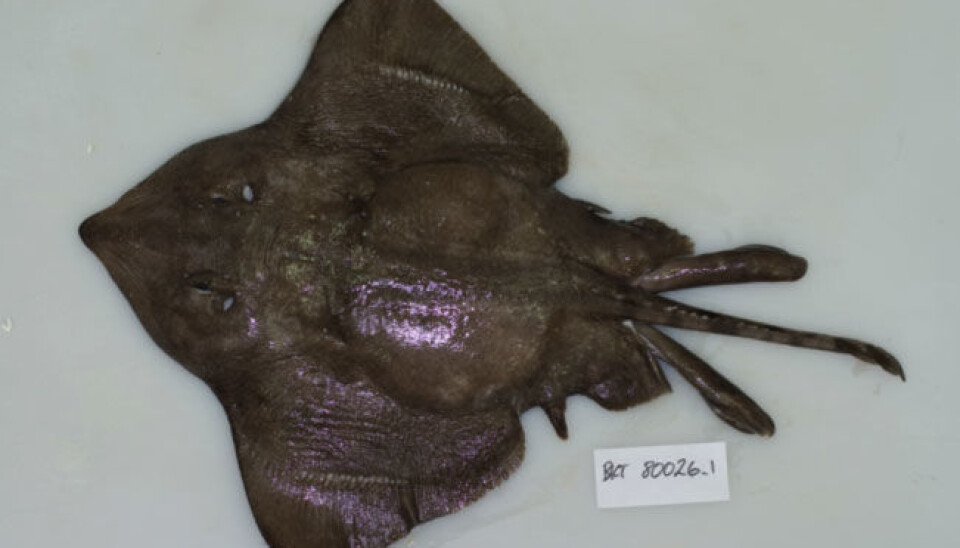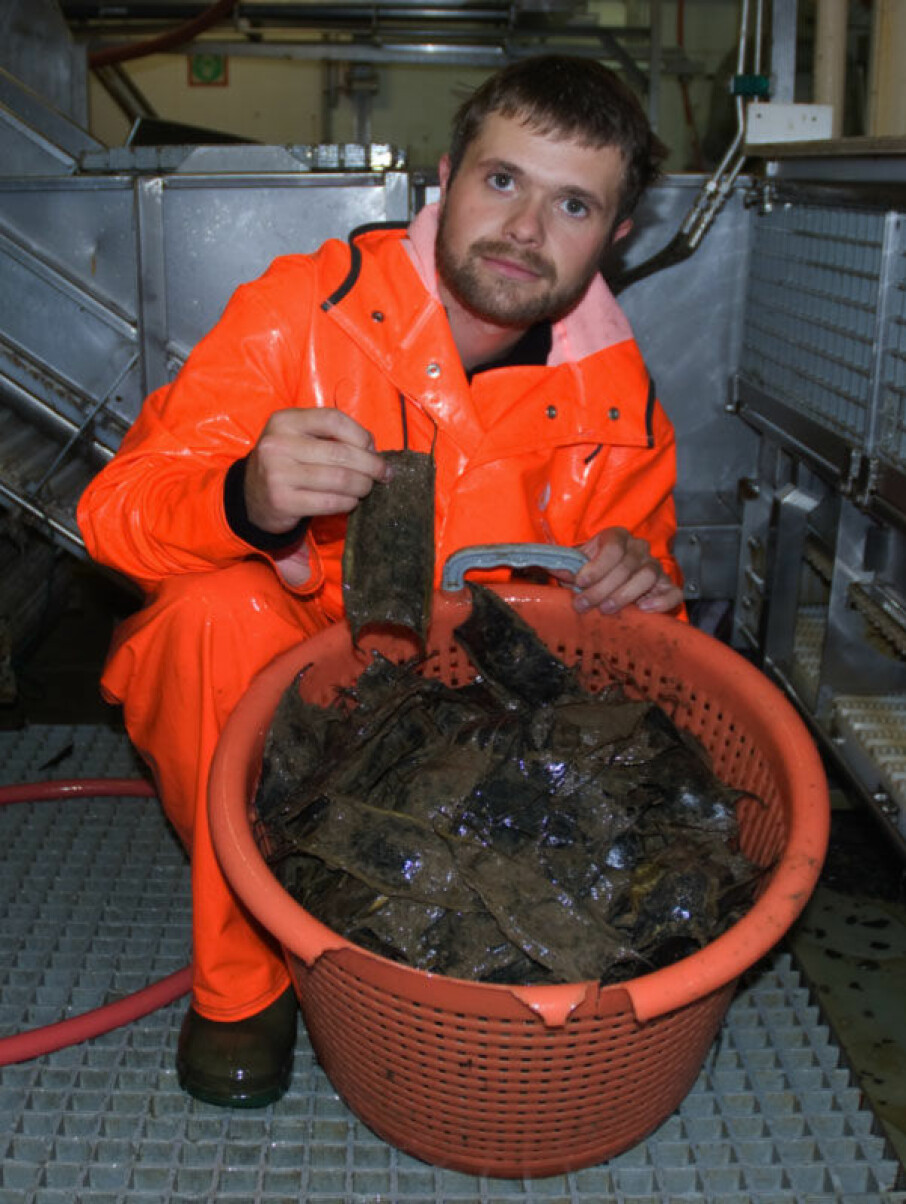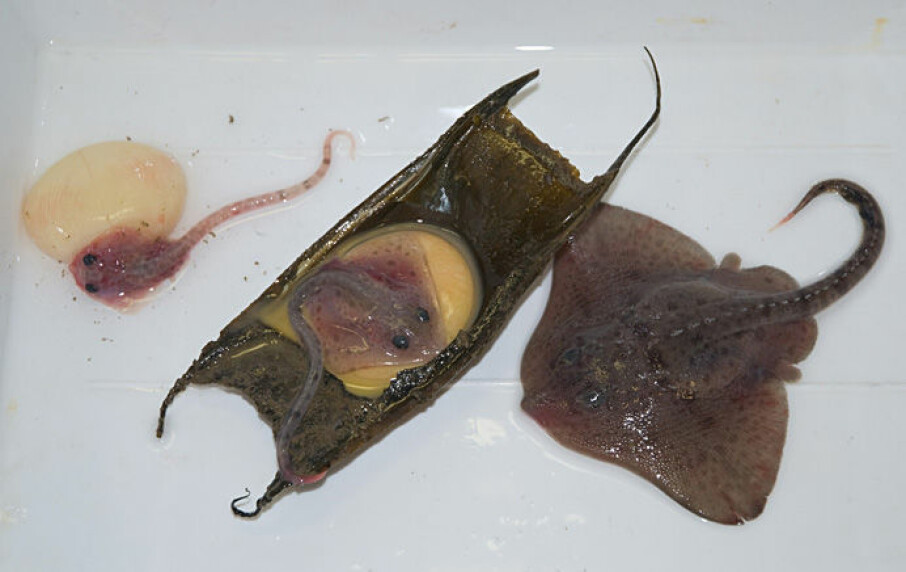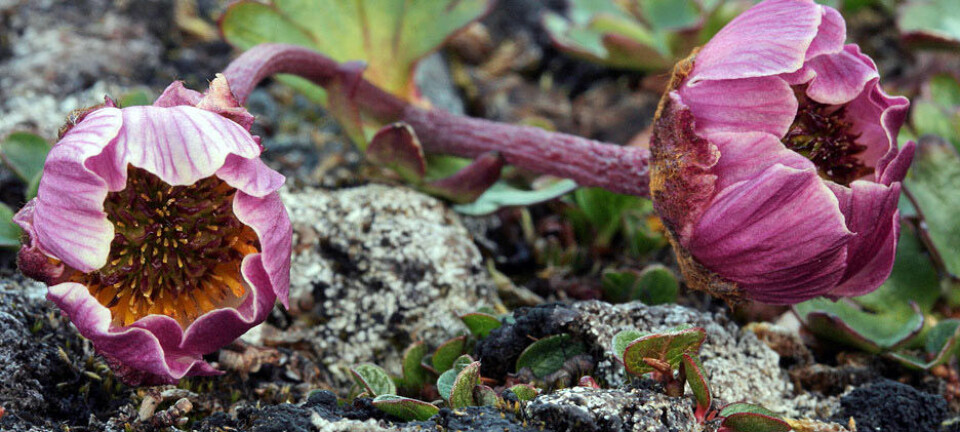
The mysterious Arctic skate
A hundred-kilo barn door with two sharp “penises” glides above the seabed in Norwegian fjords, prowling for a female. Meet the Arctic skate, an ancient and secretive fish.
Denne artikkelen er over ti år gammel og kan inneholde utdatert informasjon.
“It looks like a maxi-flounder, but skates are born this way as opposed to flounders,” says Arve Lynghammar.
He works at the Department of Arctic and Marine Biology at the University of Tromsø and is halfway toward earning his doctorate on this rare species of fish, which lives both in temperate and frigid seas.
“Flounders swim in a vertical position like ‘normal’ fish when they are small and eventually switch to the horizontal,” says Lynghammar.
But skates are pressed flat and well adapted to life on the seabed from day one when they hatch as small fry out of egg capsules.

Well, small? The eggs can be up to 20 centimetres in length, and take three years to hatch. Many species live in cold waters, where life is slow-paced.
Thorny relationships
The exception is when they mate. This is when the skate is hot for rough sex.
“The male has two sex organs. It would be wrong to call them penises, but he thrusts them into the female while holding her in place with spikes on his pectoral fins,” says Lynghammar.
When his milt has done its job inside her, the egg develops a protective case and the female lays it on the ocean floor. The egg capsules are constructed to last up to three years, as the fry inside sucks its nourishment from a yolk sack.
“On one research voyage we brought up a whole basket-full of arctic skate egg capsules,” says Lynghammar. “It’s crucial for us to map these spawning areas and avoid any trawling there.”
Research voyage

Lynghammar collects skates on voyages with fellow researchers on research vessels with reinforced bows to withstand ice.
“Small non-commercial research projects such as mine are like a minnow swimming with the big fish,” he says.
So he has to make do with what comes his way in research catches. If it’s a skate it usually goes to him.
Cooperating with sports fishersmen
Lynghammar is rarely the skipper of his own boat out on the waves. But it happens. He’s also an avid sports fisherman.
“I’m always partly a researcher when I’m fishing,” he says. “And I get quite a lot of useful information from other sports fishermen.”
Lynghammar has helped open an original communications channel for sports fishermen and others who are interested in fish - a Norwegian wiki on fish.
Fiskipedia
“I started the wiki Fiskipedia.no a couple of years ago with two of my friends,” he says.
“We’ve posted useful articles there for fishermen who hook species they don’t recognise on their lines. We get lots of queries from people who have caught oddities.”
Threatened with extinction?
He puts information from research voyages and other sources together like pieces of a puzzle. The picture of the skate is slowly taking shape.
This might be necessary if this giant pancake is going to stand a chance of surviving modern fishing methods.
“Newly hatched skates have a large enough mouth to bite on hooks, its spiny back and tail gets easily caught in nets and the broad wings keep it from escaping trawls. They are very vulnerable,” he explains.
Some species of skates could thus be threatened with extinction. Lynghammar is working to see whether stocks are increasing or diminishing. This isn’t easy because reliable data only stretches back four or five years.
Useful – for what?
But who will actually miss this secretive giant of the sea?
“No matter what, we should strive to maintain the diversity of life forms. But the skate is a big fish and large animals tend to have dominating effects on ecosystems. We don’t know for sure what would happen if they all perished,” says Lynghammar.
He thinks they are scavengers for the most part. They might also contribute to keeping other fish out of an area, thus impacting ecosystems.
Tastes like lobster
“Skates are also a table delicacy further south in Europe. It’s popular to eat the wings of the flat body. They taste like lobster,” says Lynghammar.
But before the fish can be consumed, urea has to be leached out. The skate needs the urea to maintain the same salt concentration inside its body as the seawater outside.
Relic from the distant past
Skates have a slightly different biochemistry than other fish. It’s a cartilaginous fish and a prehistoric life form that originated 400 million years ago.
The safest way of preserving these relics of early life could be to refrain from trawling in areas where they spawn. Lynghammer explains that skates are home lovers and so newcomers might not migrate to an area where they’ve been fished out.
He has made a “skate key” for fishermen and researchers to use in determining which species of skate they have caught.
“The problem is we just don’t know whether the 15 species we have in Norwegian waters are threatened or not,” he says.
The skate has been good at keeping its secrets down there on the bottom of the sea, but Lynghammer, who is one of only two skate researchers in Norway, is helping to increase our scientific knowledge of them.
—————————————————————————————————————————————————————
Read the article in Norwegian at forskning.no
Translated by: Glenn Ostling
































